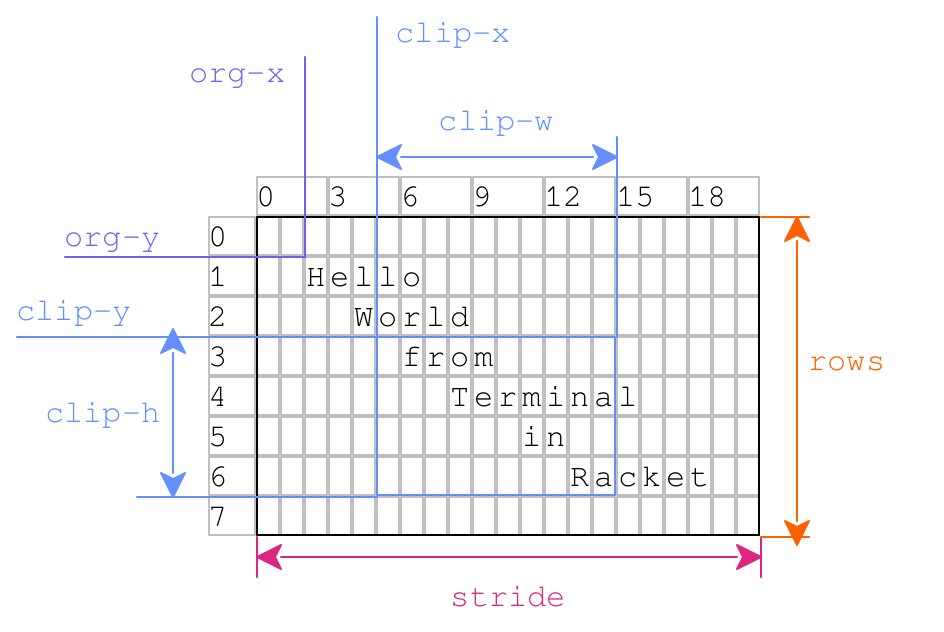3 Universal Buffer Struct
| (require tui/ubuf/ubuf-struct) | package: tui-ubuf |
This module provides the universal buffer struct and its constructors.
struct
(struct ubuf ( stride rows cells outbuf org-x org-y clip-x clip-y clip-w clip-h)) stride : exact-positive-integer? rows : exact-positive-integer? cells : fxvector? outbuf : bytes? org-x : fixnum? org-y : fixnum? clip-x : exact-nonnegative-integer? clip-y : exact-nonnegative-integer? clip-w : exact-nonnegative-integer? clip-h : exact-nonnegative-integer?
The following illustration shows the various fields of the buffer with org-x=2, org-y=1, clip-x=5, clip-y=3, clip-w=10 and clip-h=4.
The stride is the number of character cell columns and the rows represents the number of character cell lines of the whole buffer.
The cells contains all the attributes and characters for all cells in one fxvector?.
The output is a bytes? for constructing the output bytes before being sent to output port.
The relative coordinates of the origin are stored in the org-x and org-y fields.
The clipping rectangle starts at clip-x and clip-y with width in clip-w and height in clip-h fields.
procedure
w : exact-nonnegative-integer? h : exact-nonnegative-integer?
procedure
ub : ubuf? x : fixnum? y : fixnum? w : exact-nonnegative-integer? h : exact-nonnegative-integer? how : (or/c 'origin 'clip 'absolute)
If how is 'origin the origin coordinates are added to given new clip point given in x and y arguments. For 'clip the clip origin is used and for 'absolute the underlying buffer’s top-left corner is used.
procedure
(unclip-ubuf ub) → ubuf?
ub : ubuf?
procedure
(ubuf-size ub) →
exact-nonnegative-integer? exact-nonnegative-integer? ub : ubuf?
